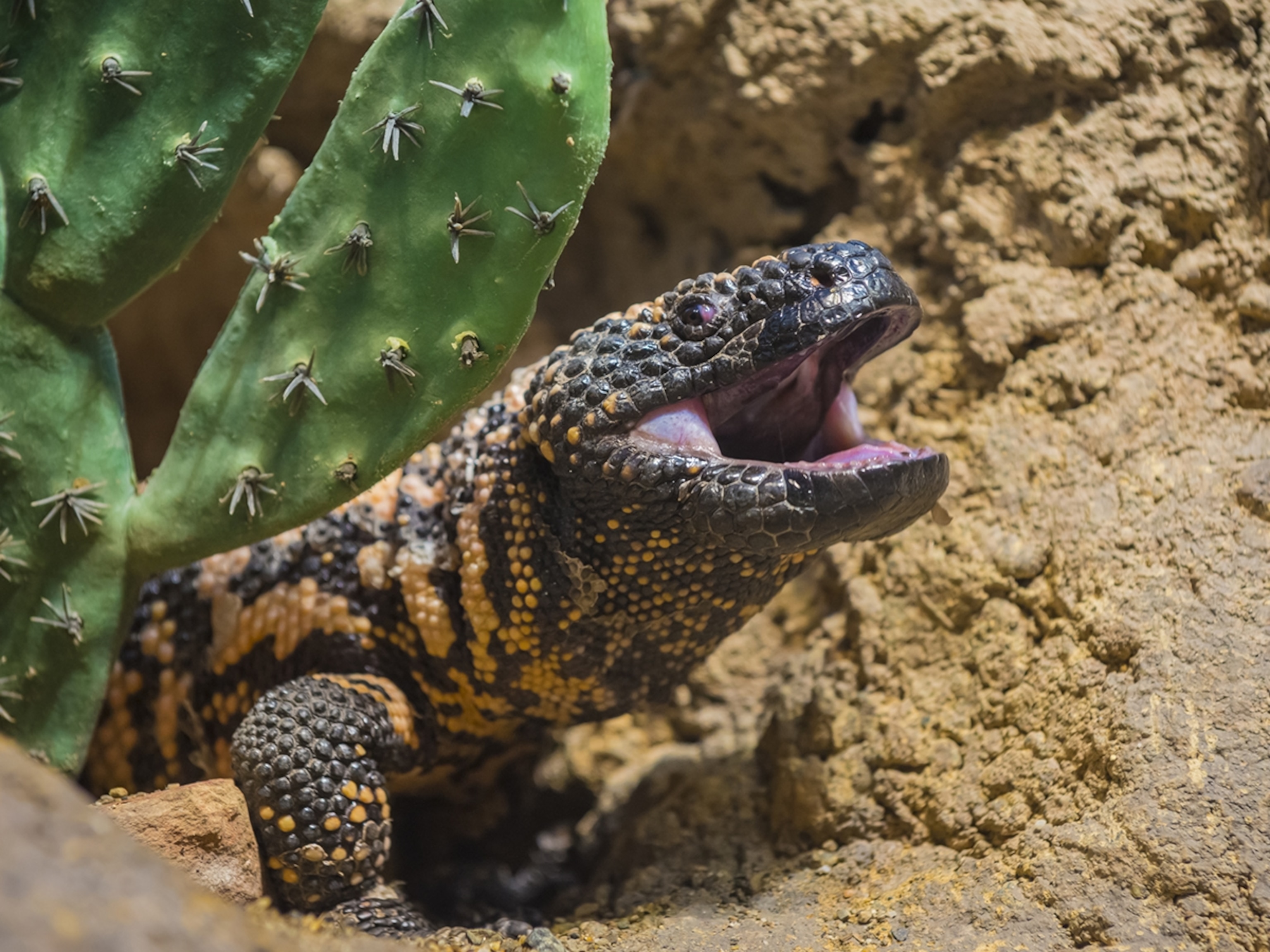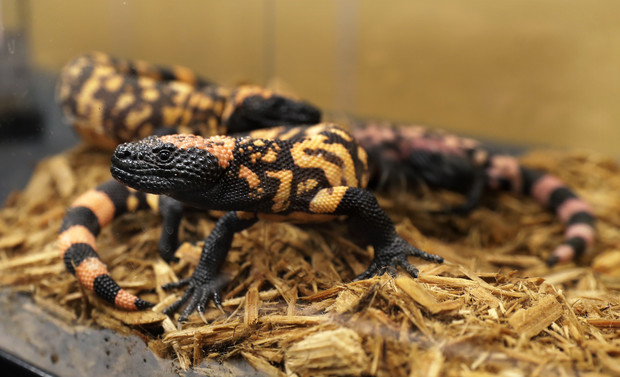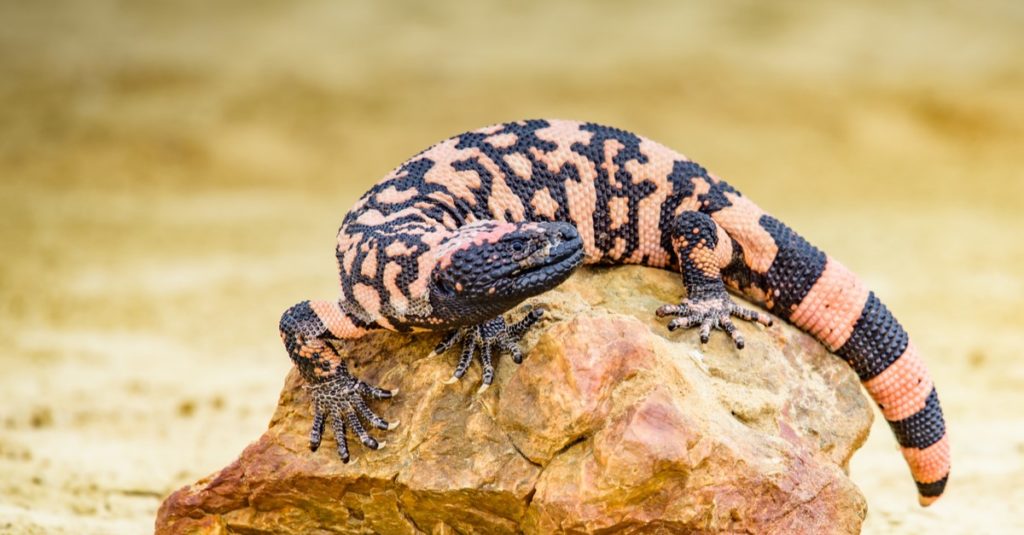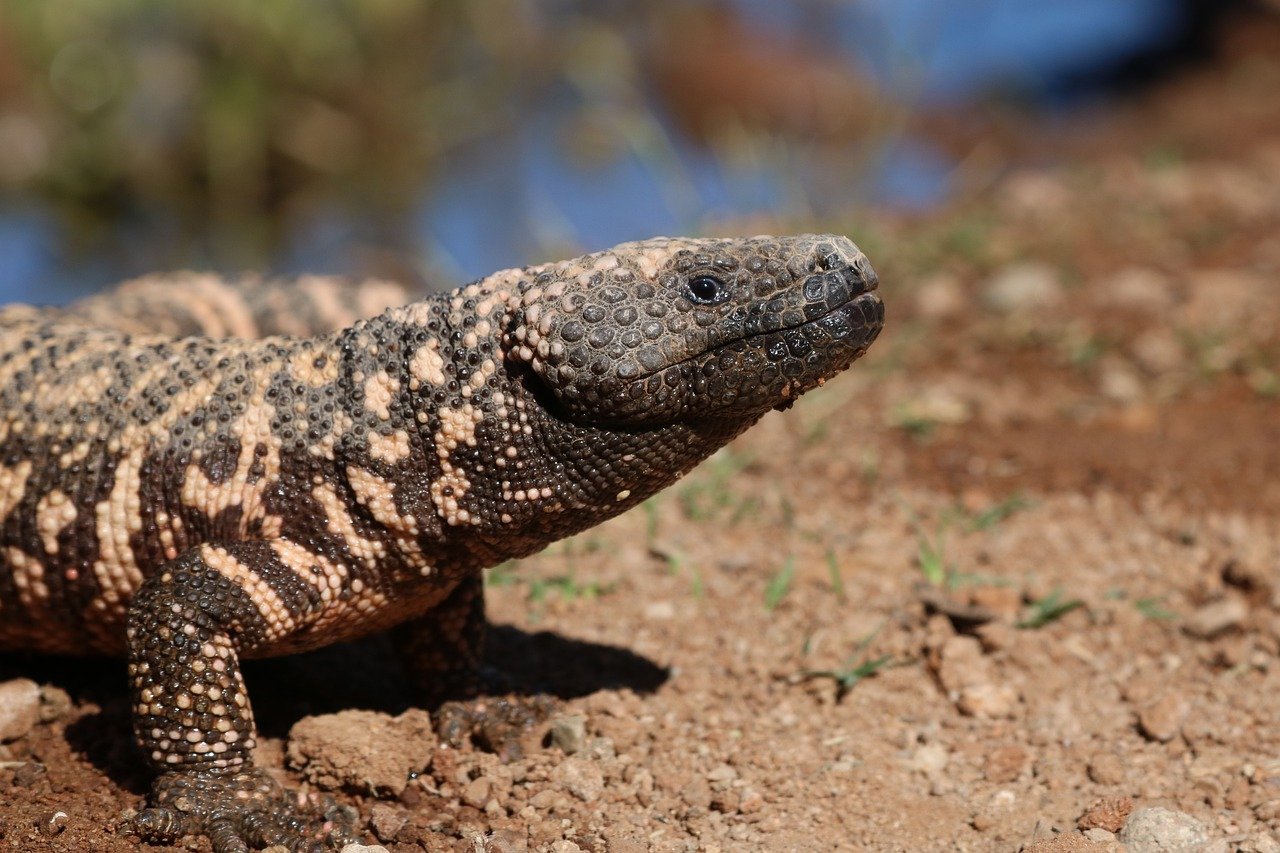STATUS
Near Threatened

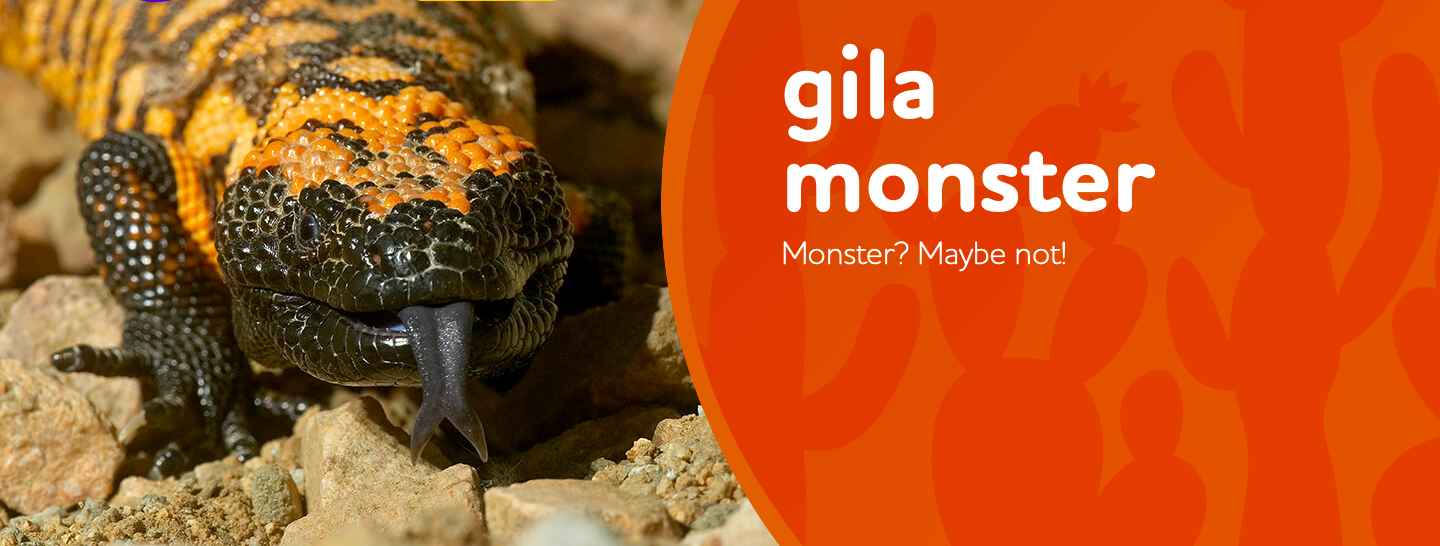
The Gila monster is one of only a handful of venomous lizards in the world. Others include the similar-looking Mexican beaded lizards, as well as iguanas and monitor lizards. Its venom is a fairly mild neurotoxin. And though a Gila bite is extremely painful, none has resulted in a reported human death. Unlike snakes, which inject venom, Gilas latch onto victims and chew to allow neurotoxins to move through grooves in their teeth and into the open wound.
Easily identified by their black bodies marked with dramatic patterns of pink, orange, or yellow, Gilas are found in the Mojave, Sonoran, and Chihuahuan deserts of the southwestern U.S. and northwestern Mexico. They take their name from Arizona's Gila River basin, where they were first discovered.
Gila populations are shrinking due primarily to human encroachment, and they are considered a threatened species.

STATUS
Near Threatened

SCIENTIFIC NAME
Heloderma suspectum

POPULATION
Only 450-800 in Utah

LENGTH
20 inches

WEIGHT
4 pounds (about 2 kgs)

HABITAT
DESERT
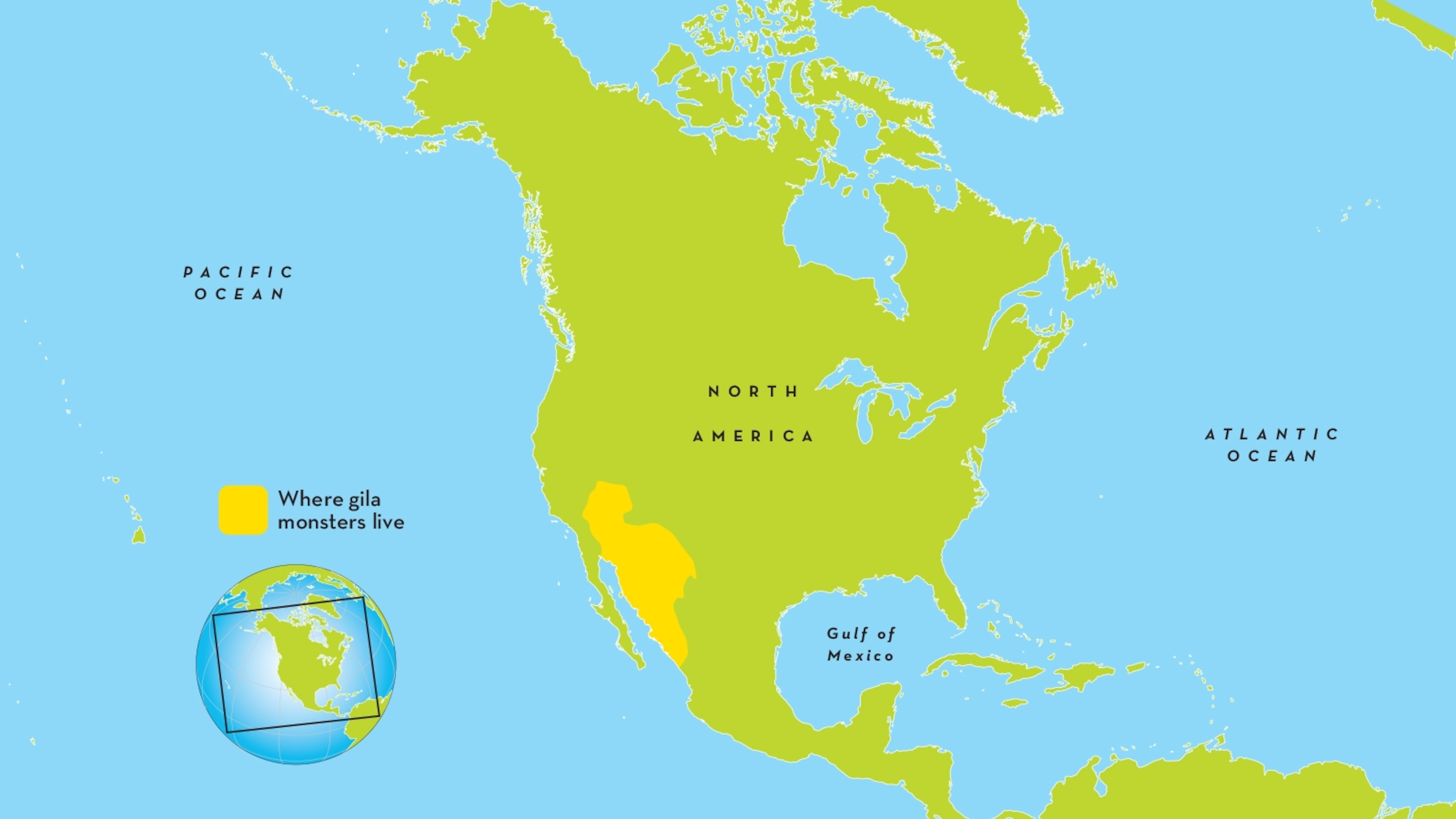
Although the banded Gila monster (Heloderma suspectum cinctum) is rarely encountered, it is one of the few venomous lizards of the world and should be approached with caution. One two subspecies of Gila monster, it is characterized by pink or orange bands across a black body.
The Gila monster is venomous; its venom is made by a row of glands in the lizard's lower jaw. ... But you really shouldn't worry, as Gila monsters tend to avoid humans and other large wildlife.
When it emerges, its black-and-orange-banded pattern provides camouflage as it walks through the rocks and sand in its desert habitat, and its black eyes blend in with its body, making detection by predators less likely. The bright orange or pink coloring also serves as a warning to potential predators to stay away.
Rounded scales cover the the Gila monsters body. The scales rest side by side and do not overlap. Small, bone-filled beads called osteoderms rest underneath the scales, resulting in the appearance of beaded skin. This provides an armored shield against predators and makes it more difficult for an enemy to sink its teeth into the Gila monster.
Consuming large amounts of water is an adaptation that keeps Gila monsters hydrated in their dry, desert habitat. They drink up to 15 to 20 percent of their body weight in water at a single time

